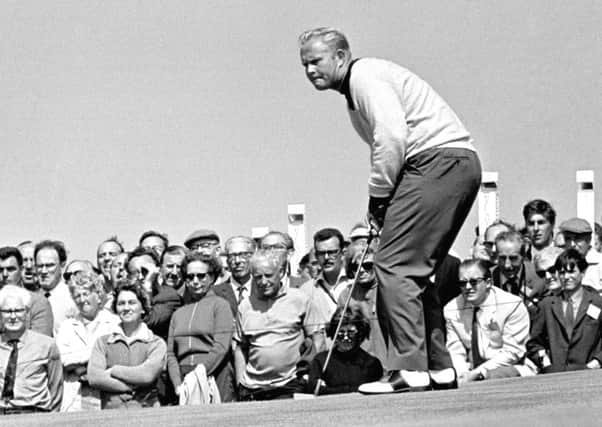Oakmont shootout paved the way for one of sport's most storied rivalries


Those were the prophetic words used by Arnold Palmer just moments after one of sport’s most iconic rivalries burst into life on this day in 1962.
Palmer had just been defeated in the 1962 US Open after an 18 hole play-off by a well-built and sandy-haired 22-year-old by the name of Jack Nicklaus.
Advertisement
Hide AdAdvertisement
Hide AdPlayed out in the grounds of the sun-soaked Oakmont Country Club in Pittsburgh, it had been an 18-hole battle between golf’s golden boy Palmer, winner of two of the game’s last three majors, and Nicklaus, a former US Amateur champion generally regarded to be the latest in a long and exhausted line of challengers to Palmer’s crown.
The pressure on Nicklaus was immense. The 10,000 strong play-off crowd was heavily partisan in favour of Palmer, born just an hour or so away in nearby Latrobe, and Nicklaus was subjected to vociferous taunting throughout.
Steely-eyed and undeterred, the younger man found himself in a four-shot ascendancy after six tense play-off holes, the raucous crowd growing restless in the face of what was to prove to be a surprise Palmer defeat.
With pressure mounting, Nicklaus sought to slow his play down at the turn, and was subsequently warned by officials at the 10th hole.
Advertisement
Hide AdAdvertisement
Hide AdBy contrast, Palmer put his foot down to explode into one of his patented championship charges, securing birdies at nine, 11 and 12 to close the gap to a solitary shot.
An uncharacteristic Palmer bogey followed, however, and with the lead at two, Nicklaus was allowed to employ a safe tee-to- green game, his red hot form with the putter unlikely to let him down.
Both men had missed birdie putts at the last the previous day which would have won them the championship outright, and had proven to be Palmer’s last palpable chance of victory.
Chasing something special, Palmer three-putted the 18th once more to allow Nicklaus to roll up for a simple bogey putt and secure his first major win.
Advertisement
Hide AdAdvertisement
Hide AdThe two would go on to share a legendary rivalry spanning two decades, in doing so making up two thirds of the famous ‘big three’ with Gary Player and shaping the game of golf as we know it.
The defeat kicked off a run of four runners-up placings in the next six US Opens for Palmer, three of those in play-offs.
Nicklaus, of course, would go on to win a record 18 major championships in a glittering career which saw him become the most decorated golfer in the history of the game.
“If I had won the US Open in 1960 or ’61 it would have probably been too soon and I might not have worked as hard as I did throughout my career,” Nicklaus later admitted.
“By the time I won at Oakmont, I was mature enough to know I had to keep growing and keep climbing the next mountain.”
The big guy, as Arnie said, was most definitely out of the cage.